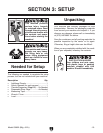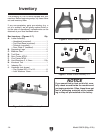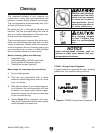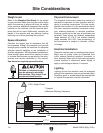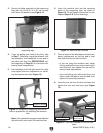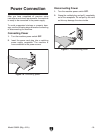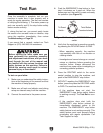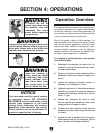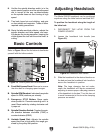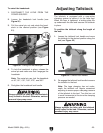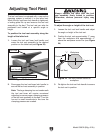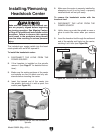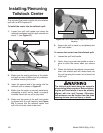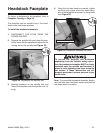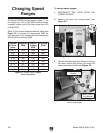
Model G0632 (Mfg. 4/12+)
-21-
SECTION 4: OPERATIONS
Operations
Damage to your eyes and lungs could result
from using this machine without proper pro-
tective gear. Always wear a face shield and
respirator when operating this machine.
NOTICE
If you have never used this type of machine
or equipment before, WE STRONGLY
RECOMMEND that you read books, review
industry trade magazines, or get formal
training before beginning any projects.
Regardless of the content in this section,
Grizzly Industrial will not be held liable for
accidents caused by lack of training.
To reduce the risk of
serious injury when using
this machine, read and
understand this entire
manual before beginning
any operations.
Loose hair, clothing, or
jewelry could get caught
in machinery and cause
serious personal injury.
Keep these items away
from moving parts at all
times to reduce this risk.
To complete a typical operation, the operator
does the following:
1. Examines the workpiece to make sure it is
suitable for turning. No extreme bows, knots,
or cracks should exist.
2. Prepares and trims up the workpiece with a
bandsaw or table saw to make it roughly con-
centric.
3. Installs the workpiece between centers, or
attaches it to a faceplate or chuck.
4. Adjusts the tool rest to
1
⁄8" above the workpiece
centerline, and sets the minimum clearance
between the workpiece and the lip of the tool
rest to
1
⁄4" gap.
5. Rotates the workpiece by hand to verify
that the spindle and workpiece rotate freely
throughout the full range of motion.
6. Positions any dust collection hoods near the
workpiece to collect wood chips and secures
it in place.
7. Verifies the belt is positioned for the appro-
priate speed range for the operation, type of
wood, and size of workpiece installed.
Operation Overview
The purpose of this overview is to provide the nov-
ice machine operator with a basic understanding
of how the machine is used during operation, so
the
machine controls/components
discussed later
in this manual
are easier to understand.
Due to the generic nature of this overview, it is
not
intended to be an instructional guide. To learn
more about specific operations,
read this entire
manual and
seek additional training from expe-
rienced
machine operators, and do additional
research outside of this manual by reading "how-
to" books, trade magazines, or websites.



